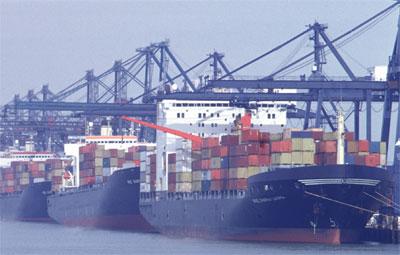
Blue Belt: Commission eases customs formalities for ships
The Commission has today set out plans to ease custom formalities for ships – reducing red tape, cutting delays in ports and making the sector more competitive. Today, freight forwarders and exporters complain that if they chose to send goods across Europe by short sea shipping, the heavy administrative burden at ports causes additional costs and significant delays - ships can wait for hours and sometimes days in ports for customs clearance. These make the maritime sector less attractive compared to other forms of transport, especially road, unnecessarily bringing more trucks on our already congested roads. With today's new Commission proposals, shipping transport will face less administrative hurdles and therefore be able to be used to its full potential in the EU internal market and beyond.
Vice-President Siim Kallas, responsible for Transport said: "Europe is faced with major challenges in terms of rising congestion and pollution. We need short sea shipping to fulfil its potential and provide a low cost, environmentally-friendly transport solution, taking more goods off lorries and off our congested roads. We are proposing innovative tools to cut red tape and help make the shipping sector a more attractive alternative for customers looking to move goods around the EU."
Commissioner Algirdas Semeta, responsible for taxation and customs union:"The Blue Belt will bring the single market to the seas. The proposed measures will greatly benefit shipping as they will reduce costs, simplify administration, facilitate trade and create a level playing field between all types of transport. At the same time this will simplify customs' work so they can better target security risks and focus on protecting our citizens and businesses."
Today's Communication "Blue Belt: a Single Transport Area for Shipping " sets out two key proposals to ease formalities for shipping by amending the existing Customs Code (CCIP, Customs Code Implementing Provisions).
1. Easing customs formalities for intra-EU shipping
Shipping companies, using a regular route within the EU and transporting mainly EU goods, can already benefit from lighter customs procedures (under the Regular Shipping Services procedures). New proposals, submitted by the Commission in June 2013, will upgrade this Regular Shipping Services to make the procedures, shorter and more flexible. The consultation period for Member States will be shortened to 15, from 45 days. And companies will be able to apply in advance for an authorisation for Member States where they may want to do business- to save time if that business opportunity arises.
2. Easing customs formalities for ships that call in third country ports
Almost 90% of ships carry both EU and non EU goods and stop frequently at EU and non-EU ports for example in Norway, Northern Africa and Russia. For these ships, the Commission is proposing to significantly improve customs procedures by putting in place a system which can distinguish between the Union goods on board (which should be swiftly discharged) and the non-Union goods on board, which must go through the appropriate customs procedures.
For this purpose, the Commission will bring forward before the end of the year a proposal to create a harmonised electronic cargo declaration. This new "eManifest" allows the shipping company to provide in all manifests (intra-EU and extra-EU) information on the status of goods to customs officials.
It is expected that these two measures will make the Blue Belt a reality by 2015.
Background
Shipping matters: 75 % of European external trade by volume and 37% of EU internal trade are carried by shipping.
The current situation: Free movement of goods is a basic freedom under EU law, however it is not yet a reality for the maritime sector. Today a ship moving between Antwerp and Rotterdam is still treated as though it came from China. Why? Because, once ships leave the Member States' territorial waters (beyond 12 miles from shore) they are considered to pass the EU's external borders. So ships travelling between ports in two different Member States are deemed to have left the EU Customs Territory and customs formalities are required when the vessel leaves the port of departure and again when the vessel arrives at the port of destination, even if both are EU ports.
According to the European Shipowners Association (ECSA) on the basis of information received by their members (shipping companies), savings from simplifying administrative procedures can go up to around 25€ per container. Apart from saving money, saving time is even more important. Today, a lot of customers (e.g. exporters) choose road transport over maritime transport because of the time constraints.
Share of freight carried inside the EU by transport mode: 45.3% road, 11.0% rail, 3.7% inland waterways, 3.1% pipelines, 36.8% sea (i.e. short sea shipping), 0.1% air (Source: http://ec.europa.eu/transport/facts-fundings/statistics/pocketbook-2013…, in tonne-kilometers).
The Blue Belt Communication adopted today not only sets out proposals to create a Blue Belt- an area where ships can operate freely within the EU internal market with the minimum of administrative burden while safety, security environmental protection, as well as customs and tax policies are strengthened but it also proposes the extension of these simplifications to extra-EU voyages by the use of better monitoring and reporting systems.
The Blue Belt proposals go hand in hand with the Ports Policy Review adopted on May 23 2013, which aims to promote the competitiveness of Europe's sea ports and unleash their growth potential (see MEMO/13/448 ).
The Communication follows the launch of the Single Market Act II in October 2012 (see IP/12/1054 ) and is an extension of the Blue belt pilot project managed by the European Maritime Safety Agency in 2011 .
Details
- Publication date
- 22 September 2016
- Author
- Directorate-General for Mobility and Transport
